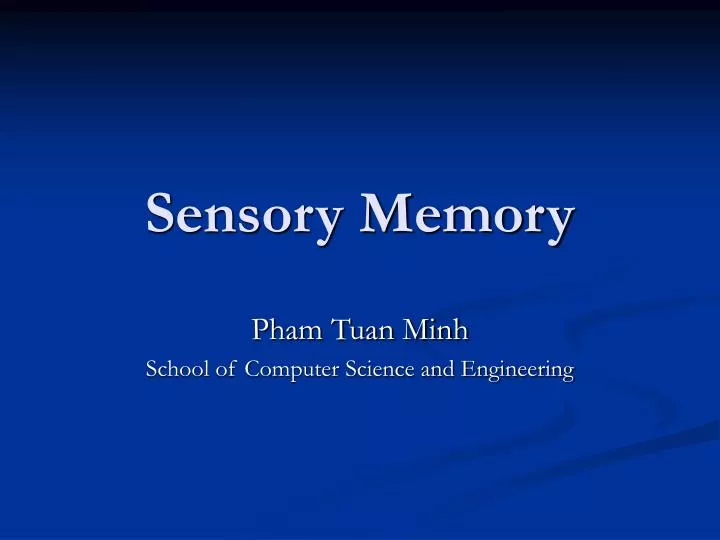
With very short presentations, participants often report that they seem to "see" more than they can actually report. It is out of cognitive control and is an automatic response. The ability to look at an item and remember what it looked like with just a split second of observation, or memorization, is the example of sensory memory. Sensory memory holds information, derived from the senses, less than one second after an item is perceived.

Normal functioning, decay over time, and brain damage all affect the accuracy and capacity of the memory. Finally, the retrieval of information from long-term memory can be disrupted because of decay within long-term memory. Also, the storage process can become corrupted by physical damage to areas of the brain that are associated with memory storage, such as the hippocampus. The amount of attention given new stimuli can diminish the amount of information that becomes encoded for storage. Pain, for example, has been identified as a physical condition that impairs memory, and has been noted in animal models as well as chronic pain patients. The ways by which information is encoded, stored, and retrieved can all be corrupted. Memory is not a perfect processor, and is affected by many factors. Priming is the process of subliminally arousing specific responses from memory and shows that not all memory is consciously activated, whereas procedural memory is the slow and gradual learning of skills that often occurs without conscious attention to learning. An example of a non-declarative process would be the unconscious learning or retrieval of information by way of procedural memory, or a priming phenomenon. Non-declarative, or implicit, memory is the unconscious storage and recollection of information. Declarative memory is usually the primary process thought of when referencing memory. Semantic memory refers to memory that is encoded with specific meaning, while episodic memory refers to information that is encoded along a spatial and temporal plane. Under declarative memory resides semantic and episodic memory. ĭeclarative, or explicit, memory is the conscious storage and recollection of data. Finally, the function of long-term memory is to store through various categorical models or systems. The working memory also retrieves information from previously stored material.

Information in the form of stimuli is encoded in accordance with explicit or implicit functions by the working memory processor. Working memory serves as an encoding and retrieval processor. The sensory processor allows information from the outside world to be sensed in the form of chemical and physical stimuli and attended to various levels of focus and intent. Memory is often understood as an informational processing system with explicit and implicit functioning that is made up of a sensory processor, short-term (or working) memory, and long-term memory. Memory loss is usually described as forgetfulness or amnesia. If past events could not be remembered, it would be impossible for language, relationships, or personal identity to develop. It is the retention of information over time for the purpose of influencing future action.


That is, information that comes from our eyes is stored in the visual sensory register as an image, information coming from the ears is stored in an acoustic sensory register as sounds. The information resides in the sensory register in the same form as the senses.The information in the sensory register is an exact copy of what effects our sense organs, and that information resides in the sensory register for a fraction of a second before being lost.The sensory register holds the direct input from the senses for a brief period time, milliseconds, before it is lost.There are sensory registers for difference senses such as a visual sensory register that accepts input from the eyes and an acoustic sensory register that accepts input from the ears.a stimulus impacts a learners senses and is brought into the sensory registry.


 0 kommentar(er)
0 kommentar(er)
